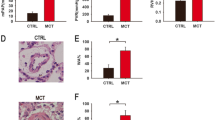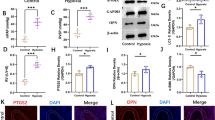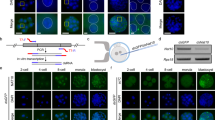Abstract
It has been shown that the circular RNA (circRNA) circPTK2 modulates many types of diseases. However, the possible functions as well as the molecular mechanisms of circPTK2 in preeclampsia (PE) and their effects on trophoblast are unknown. Herein, we obtained the placental tissues from 20 pregnant women with PE who delivered in the Yueyang Maternal Child Medicine Health Hospital between 2019 and 2021 to serve as the PE group, and a normal group was composed of 20 healthy pregnant women with normal prenatal examinations. The circPTK2 level was significantly reduced in tissues from the PE group. The expression and localization of circPTK2 were verified using RT-qPCR. CircPTK2 silencing inhibited HTR-8/SVneo growth and migration in vitro. To investigate the underlying mechanism of circPTK2 in PE progression, dual-luciferase reporter assays were conducted. It was found that circPTK2 and WNT7B could bind directly to miR-619, and that circPTK2 affected WNT7B expression by sponging miR-619. To conclude, this study identified the functions and mechanisms of the circPTK2/miR-619/WNT7B axis in PE progression. In this way, circPTK2 has the potential to be used both in diagnostic and therapeutic settings for PE.




Similar content being viewed by others
Data availability
The authors confirm that the data supporting the findings of this study are available within the article and its supplementary materials.
References
Chappell LC, Cluver CA, Kingdom J et al (2021) Pre-eclampsia. Lancet 398(10297):341–354
Poon LC, Shennan A, Hyett JA et al (2019) The international federation of gynecology and obstetrics (figo) initiative on pre-eclampsia: a pragmatic guide for first-trimester screening and prevention. Int J Gynaecol Obstet 145(Suppl 1):1–33
Staff AC (2019) The two-stage placental model of preeclampsia: an update. J Reprod Immunol 134–135:1–10
Burton GJ, Redman CW, Roberts JM et al (2019) Pre-eclampsia: pathophysiology and clinical implications. BMJ 366:l2381
Liu P, Wang Z, Ou X et al (2022) The FUS/circEZH2/KLF5/ feedback loop contributes to CXCR4-induced liver metastasis of breast cancer by enhancing epithelial-mesenchymal transition. Mol Cancer 21(1):198
Jia N, Li J (2019) Role of circular RNAs in preeclampsia. Dis Markers 2019:7237495
Liu CX, Chen LL (2022) Circular RNAs: characterization, cellular roles, and applications. Cell 185(12):2016–2034
Sun N, Qin S, Zhang L et al (2021) Roles of noncoding RNAs in preeclampsia. Reprod Biol Endocrinol 19(1):100
Ou Y, Liu M, Zhu L et al (2019) The expression profile of circRNA and its potential regulatory targets in the placentas of severe pre-eclampsia. Taiwan J Obstet Gynecol 58(6):769–777
Shen XY, Zheng LL, Huang J et al (2019) CircTRNC18 inhibits trophoblast cell migration and epithelial-mesenchymal transition by regulating miR-762/Grhl2 pathway in pre-eclampsia. RNA Biol 16(11):1565–1573
Zhou W, Wang H, Yang J et al (2019) Down-regulated circPAPPA suppresses the proliferation and invasion of trophoblast cells via the miR-384/STAT3 pathway. Biosci Rep 39(9):BSR20191965. https://doi.org/10.1042/BSR20191965
Jiang M, Lash GE, Zhao X et al (2018) CircRNA-0004904, CircRNA-0001855, and PAPP-A: potential novel biomarkers for the prediction of preeclampsia. Cell Physiol Biochem 46(6):2576–2586
Zhou C, Yi C, Yi Y et al (2020) LncRNA PVT1 promotes gemcitabine resistance of pancreatic cancer via activating Wnt/β-catenin and autophagy pathway through modulating the miR-619-5p/Pygo2 and miR-619-5p/ATG14 axes. Mol Cancer 19(1):118
Song A, Wu Y, Chu W et al (2021) Involvement of miR-619-5p in resistance to cisplatin by regulating ATXN3 in oral squamous cell carcinoma. Int J Biol Sci 17(2):430–447
Nie X, Liu H, Liu L et al (2020) Emerging roles of Wnt ligands in human colorectal cancer. Front Oncol 10:1341
Matsuoka K, Bakiri L, Wolff LI et al (2020) Wnt signaling and Loxl2 promote aggressive osteosarcoma. Cell Res 30(10):885–901
Brown MA, Magee LA, Kenny LC et al (2018) Hypertensive disorders of pregnancy: ISSHP classification, diagnosis, and management recommendations for international practice. Hypertension 72(1):24–43
Phipps EA, Thadhani R, Benzing T et al (2019) Pre-eclampsia: pathogenesis, novel diagnostics and therapies. Nat Rev Nephrol 15(5):275–289
Munjas J, Sopić M, Stefanović A et al (2021) Non-coding RNAs in preeclampsia-molecular mechanisms and diagnostic potential. Int J Mol Sci 22(19):10652. https://doi.org/10.3390/ijms221910652
Li X, Yang L, Chen LL (2018) The biogenesis, functions, and challenges of circular RNAs. Mol Cell 71(3):428–442
Yang H, Li X, Meng Q et al (2020) CircPTK2 (hsa_circ_0005273) as a novel therapeutic target for metastatic colorectal cancer. Mol Cancer 19(1):13
Tay Y, Rinn J, Pandolfi PP (2014) The multilayered complexity of ceRNA crosstalk and competition. Nature 505(7483):344–352
Ma W, Niu Z, Han D et al (2022) Circ-FAT1 up-regulates FOSL2 expression by sponging miR-619-5p to facilitate colorectal cancer progression. Biochem Genet 60(4):1362–1379
Chen G, Gu Y, Han P et al (2019) Long noncoding RNA SBF2-AS1 promotes colorectal cancer proliferation and invasion by inhibiting miR-619-5p activity and facilitating HDAC3 expression. J Cell Physiol 234(10):18688–18696
Dietrich B, Haider S, Meinhardt G et al (2022) WNT and NOTCH signaling in human trophoblast development and differentiation. Cell Mol Life Sci 79(6):292
Sonderegger S, Husslein H, Leisser C et al (2007) Complex expression pattern of Wnt ligands and frizzled receptors in human placenta and its trophoblast subtypes. Placenta 28(Suppl A):S97-102
Cross JC, Nakano H, Natale DR et al (2006) Branching morphogenesis during development of placental villi. Differentiation 74(7):393–401
Parr BA, Cornish VA, Cybulsky MI et al (2001) Wnt7b regulates placental development in mice. Dev Biol 237(2):324–332
Galceran J, Fariñas I, Depew MJ et al (1999) Wnt3a-/–like phenotype and limb deficiency in Lef1(-/-)Tcf1(-/-) mice. Genes Dev 13(6):709–717
Li D, Li Z, Yang Y et al (2020) Circular RNAs as biomarkers and therapeutic targets in environmental chemical exposure-related diseases. Environ Res 180:108825
Funding
This work was supported by the Research Foundation of Natural Science Foundation of Hunan province (No. 2021JJ40550); Natural Science Foundation of Hunan province (No. 2021JJ30693); National Natural Science Foundation of China(No. 82000421);Guiding project of Hengyang science and Technology Bureau(No. 2021181);Guiding project of Hengyang science and Technology Bureau(No. 201909);Natural Science Foundation of Hunan province (No. 2022JJ40016); Scientific Research Project of Hunan Provincial Health Commission (No.20200929); Clinical Innovation Leading Scientific Research Projects of Hunan Science and Technology Department (No.2020SK52601).
Author information
Authors and Affiliations
Contributions
SW and LL designed and carried out the study, collected and analyzed the data, and wrote the manuscript. SW, TT and JX conducted the cell experiments. XY and JC performed glucose and lactate assay on. ZT and PW reviewed the manuscript. All authors read and approved the final manuscript.
Corresponding authors
Ethics declarations
Conflict of interest
The authors have not disclosed any competing interests.
Additional information
Publisher's Note
Springer Nature remains neutral with regard to jurisdictional claims in published maps and institutional affiliations.
Rights and permissions
Springer Nature or its licensor (e.g. a society or other partner) holds exclusive rights to this article under a publishing agreement with the author(s) or other rightsholder(s); author self-archiving of the accepted manuscript version of this article is solely governed by the terms of such publishing agreement and applicable law.
About this article
Cite this article
Wu, S., Liu, L., Tao, T. et al. circPTK2 promotes proliferation, migration and invasion of trophoblast cells through the miR-619/WNT7B pathway in preeclampsia. Mol Cell Biochem 478, 2621–2627 (2023). https://doi.org/10.1007/s11010-023-04688-1
Received:
Accepted:
Published:
Issue Date:
DOI: https://doi.org/10.1007/s11010-023-04688-1




